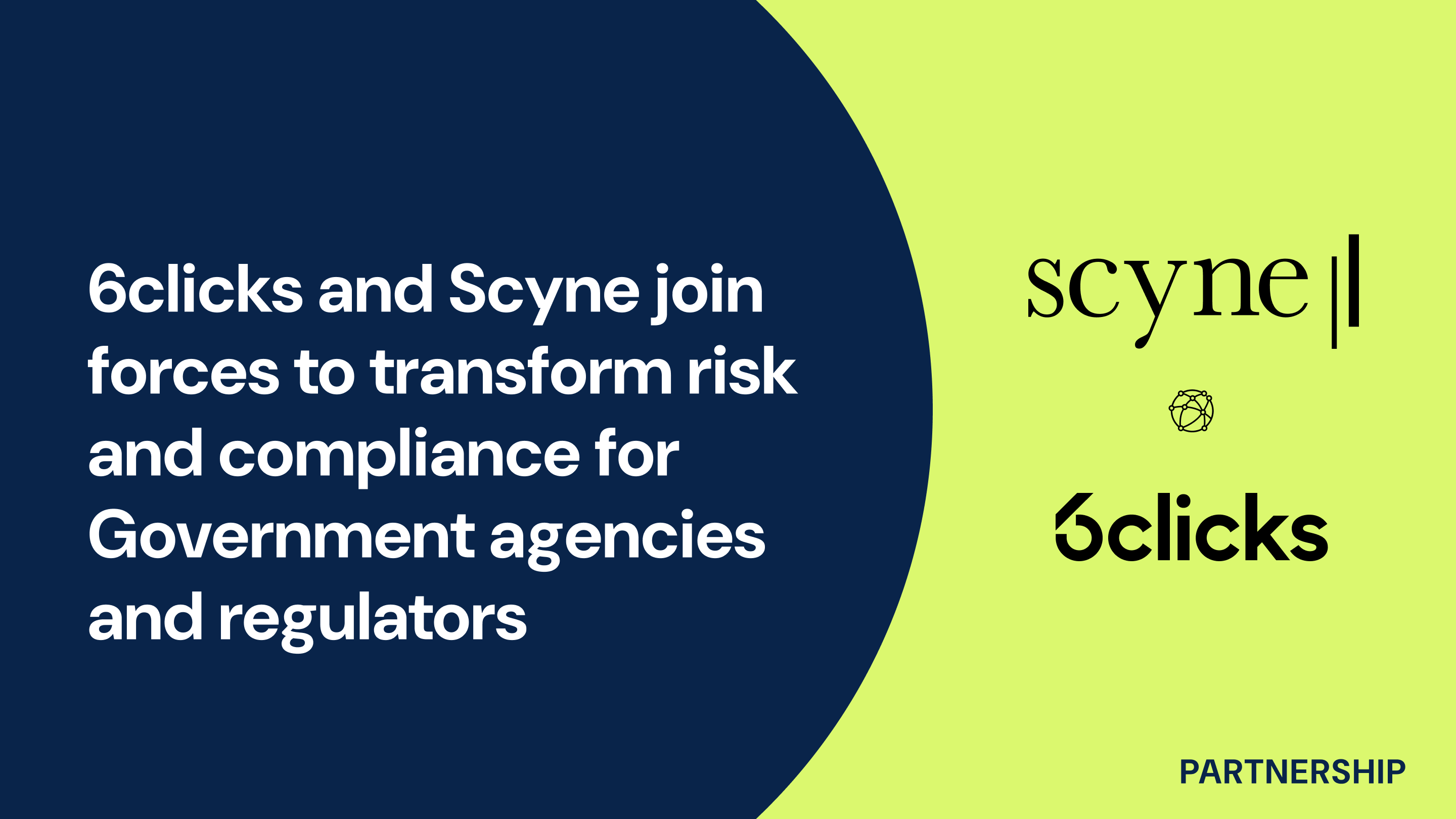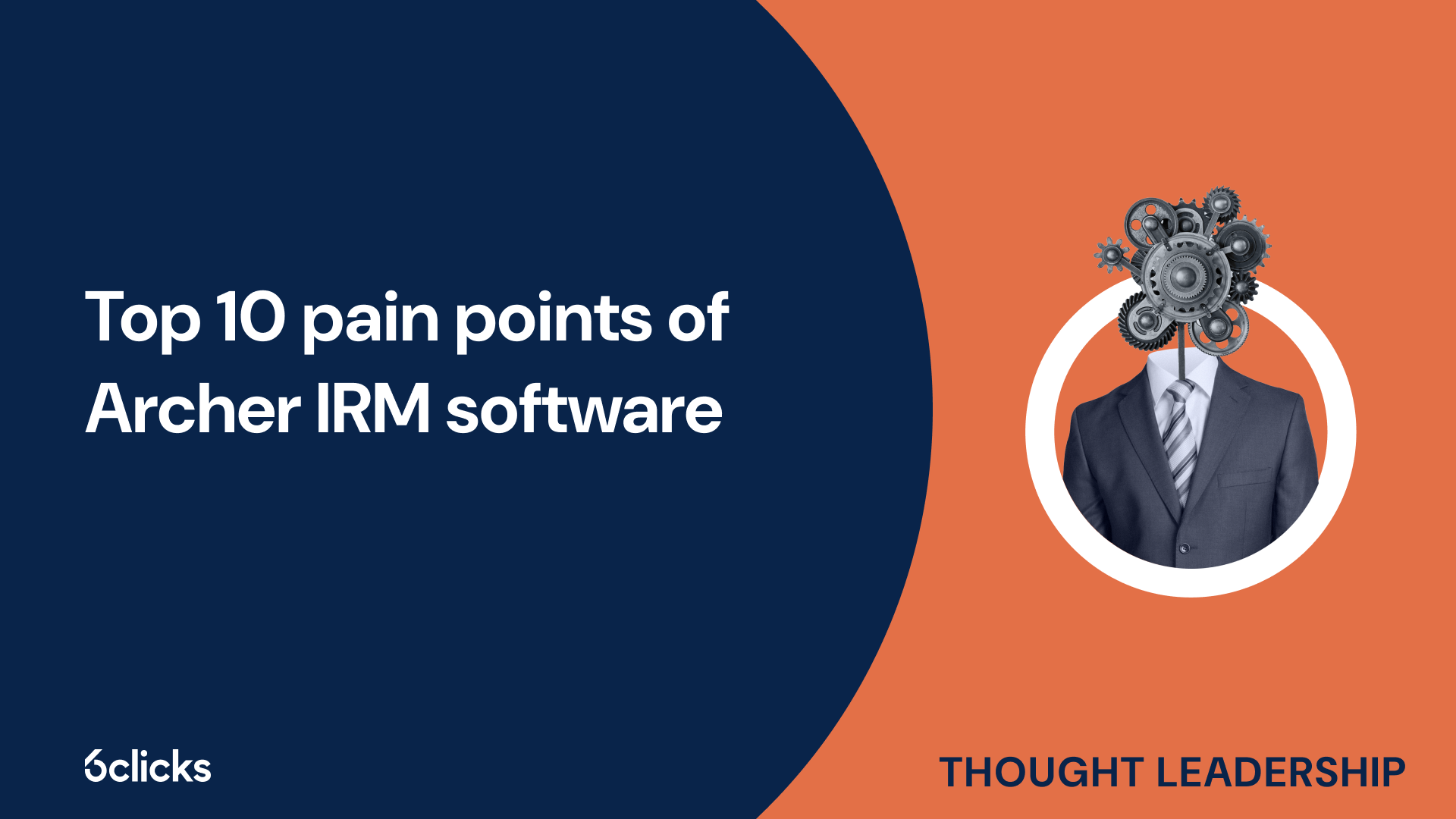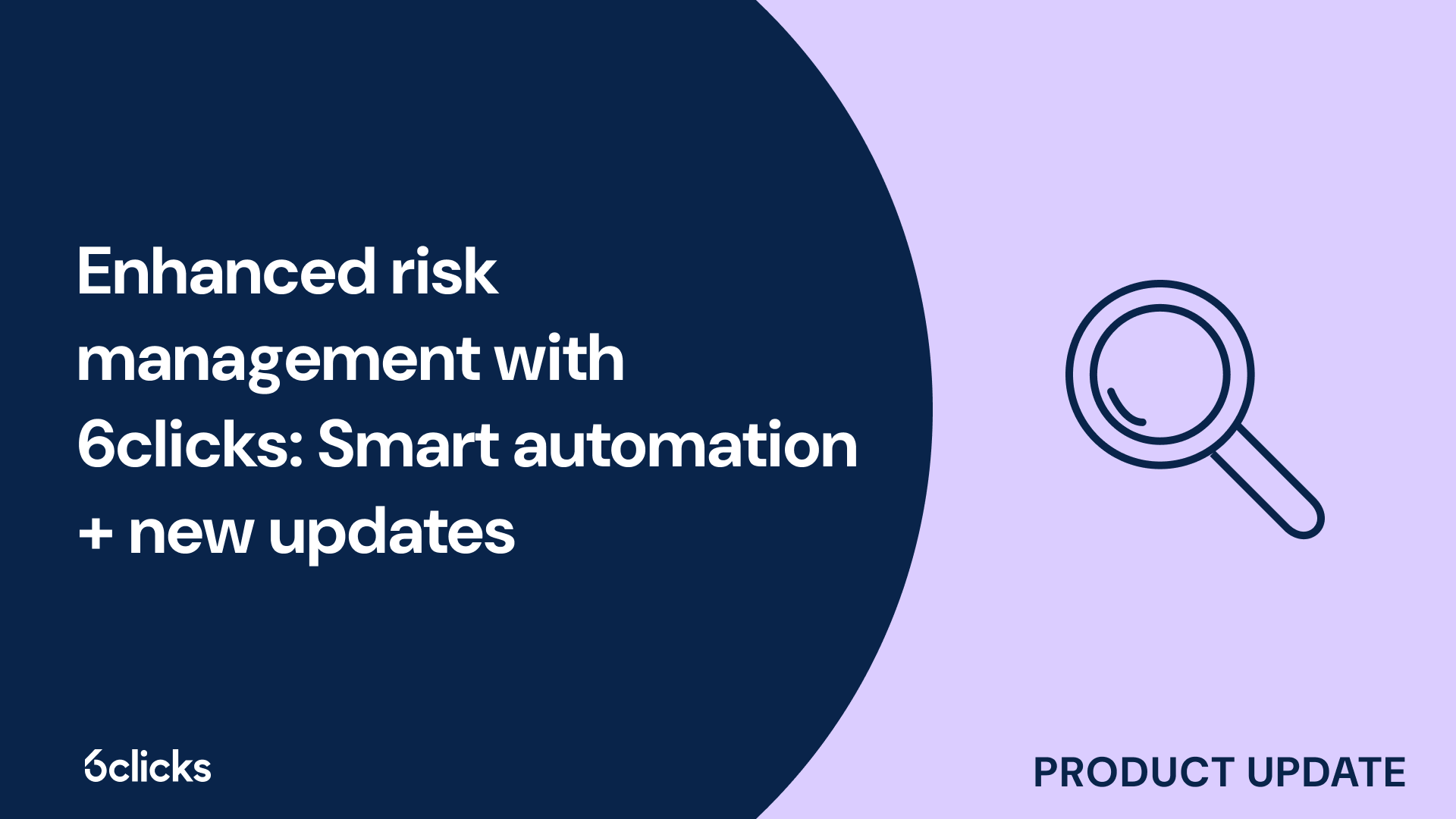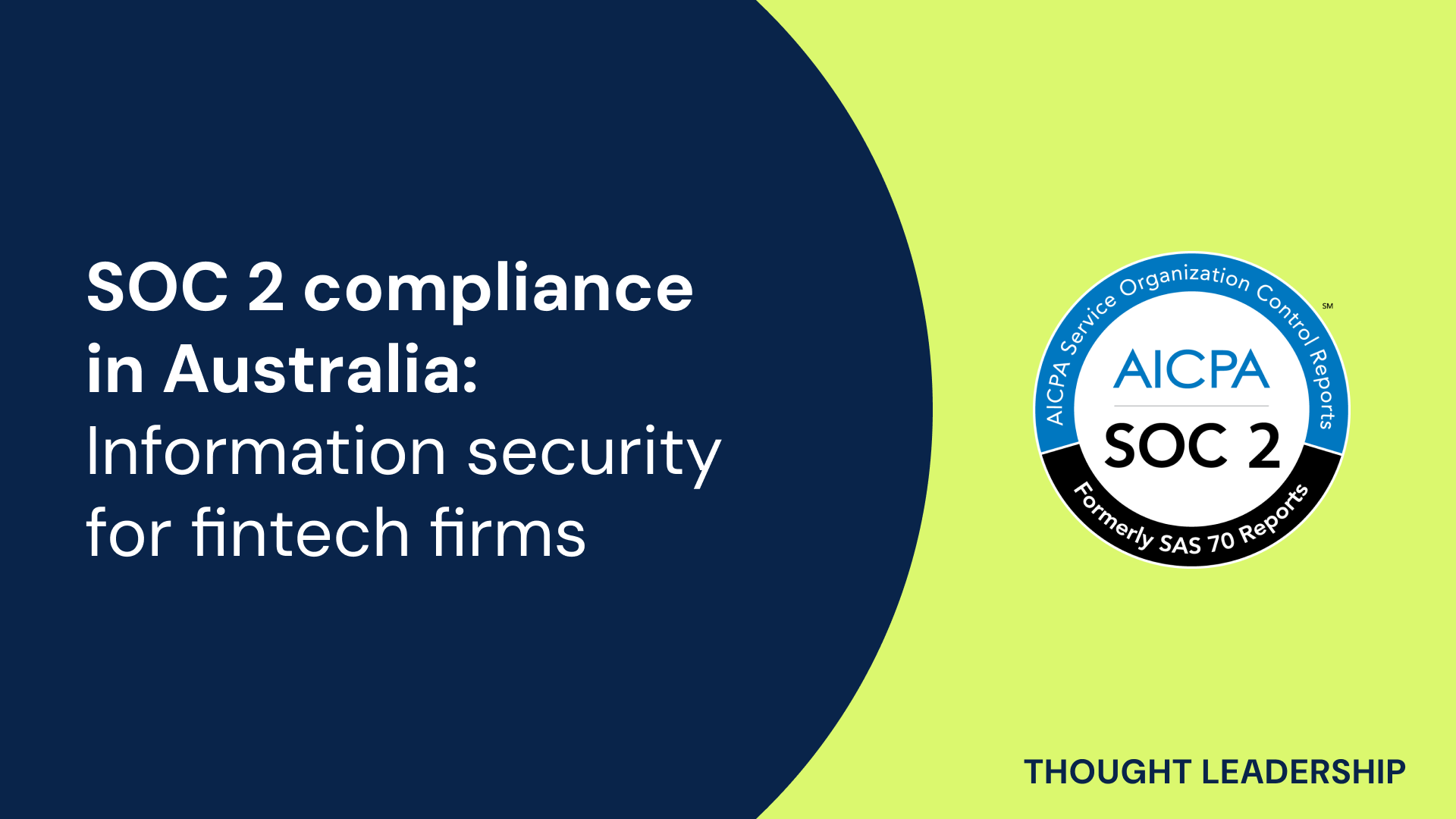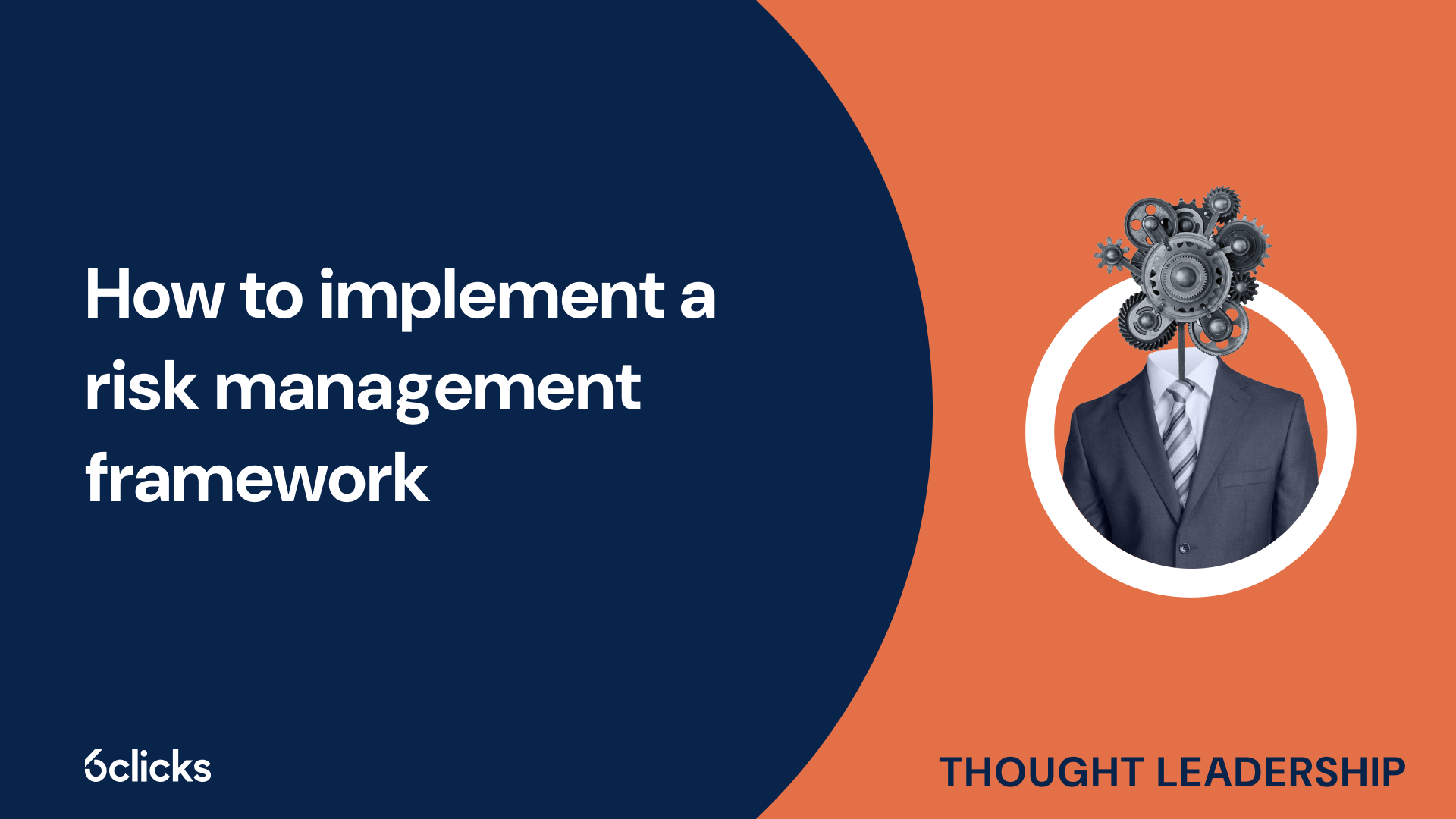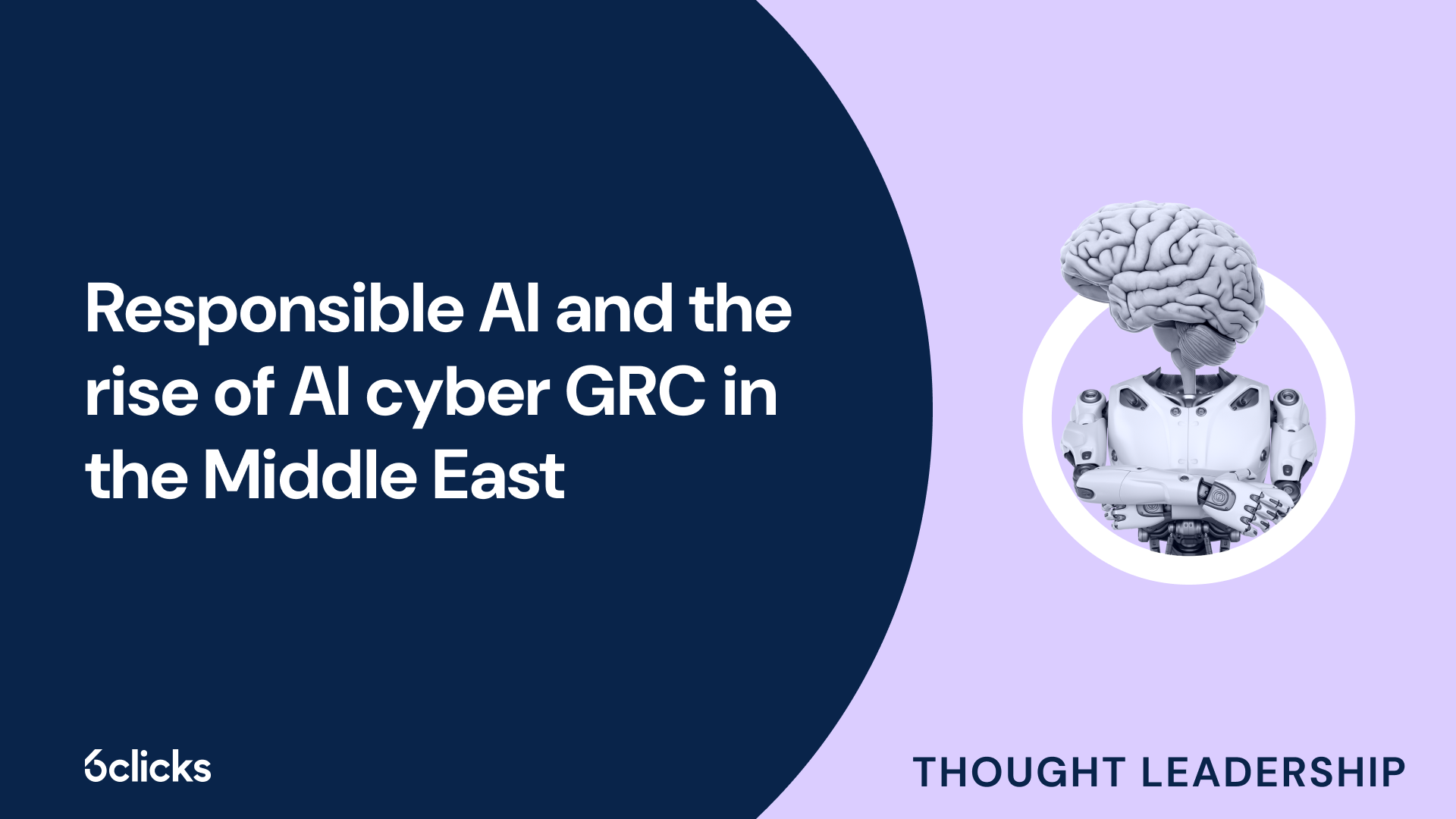The GRC buyer’s guide for 2025: Building resilience with AI-powered, federated solutions
Discover the ultimate GRC buyer's guide for 2025! Uncover how AI-powered, federated solutions transform compliance and security management for industries like government, aerospace, banking, and more. Learn about centralized control, continuous compliance, and advanced cyber GRC capabilities. Download now!
-1.png?width=200&height=249&name=Group%20193%20(1)-1.png)
The GRC buyer’s guide for 2025: Building resilience with AI-powered, federated solutions
What is GRC?
GRC, which stands for Governance, Risk, and Compliance, refers to the integrated approach that organizations adopt to manage their governance, risk assessment, and compliance requirements. GRC tools are software solutions that provide a wide range of functionality to help businesses streamline their risk management processes, ensure compliance with various regulations and standards, and effectively monitor and mitigate potential risks. These tools offer features such as risk assessment, compliance management, audit management, policy management, and more, all within a single platform. By integrating these critical business processes, GRC solutions help organizations align their business goals with regulatory requirements and improve overall decision-making and performance. Furthermore, GRC tools provide robust security measures and facilitate efficient collaboration across different teams and departments, ensuring that compliance processes are effectively executed and that potential compliance issues are promptly identified and resolved.
What does a GRC tool do?
A GRC (Governance, Risk Management, and Compliance) tool is a software solution designed to help organizations effectively manage governance, risk management, and compliance processes. It provides a unified framework for integrating and streamlining these critical components, enabling businesses to achieve their operational excellence goals.
A GRC tool plays a crucial role in enhancing governance by facilitating centralized access to essential information, such as policies, procedures, and compliance requirements. With a GRC tool, organizations can establish and enforce internal controls, ensuring adherence to regulatory standards and best practices.
In terms of risk management, a GRC tool enables organizations to identify, assess, and prioritize potential risks. It supports the implementation of risk mitigation strategies and enables the monitoring and tracking of risk management activities. This helps in minimizing financial losses and reputational damage.
Compliance management is another key function of a GRC tool. It helps organizations stay up to date with regulatory requirements, industry standards, and internal policies. A GRC tool enables the automation of compliance processes, such as audit management, documentation, and reporting. It also provides a comprehensive audit trail for accountability and transparency.
Furthermore, a GRC tool plays a pivotal role in securing sensitive data. It provides robust security measures, such as access controls, authentication mechanisms, and encryption, ensuring the confidentiality, integrity, and availability of critical information.
Benefits of using GRC tools
A GRC tool offers numerous benefits to organizations in managing risks, ensuring compliance, and enhancing governance. With central access to crucial information, organizations can streamline their governance processes and enforce internal controls effectively. This facilitates adherence to regulatory standards and best practices, minimizing potential risks and financial losses. Additionally, a GRC tool automates compliance management, helping organizations stay up to date with regulatory requirements and industry standards. It enables the automation of compliance processes, such as audit management, documentation, and reporting, while providing a comprehensive audit trail for accountability and transparency. Moreover, a GRC tool plays a pivotal role in securing sensitive data through robust security measures such as access controls, authentication mechanisms, and encryption. By leveraging the power of GRC tools, organizations can mitigate risks, ensure compliance, and achieve their business goals while maintaining customer trust and meeting regulatory obligations.
Improved risk management
GRC (Governance, Risk, and Compliance) tools play a crucial role in improving risk management within a business. These tools offer a wide range of features to help organizations identify, assess, and mitigate risks effectively.
One of the key benefits of using GRC tools for risk management is their ability to identify risks across various areas of the business. By integrating data from different sources, these tools provide a comprehensive view of potential risks. This allows businesses to proactively address and mitigate these risks before they escalate.
GRC tools also facilitate the evaluation and assessment of risks. Through advanced analytics and reporting capabilities, businesses can gain insights into the likelihood and impact of different risks. This enables them to prioritize their mitigation efforts and allocate resources more effectively.
Furthermore, GRC tools enable businesses to implement risk mitigation strategies and monitor risks on an ongoing basis. These tools provide user-friendly interfaces and automation features that streamline compliance processes and ensure that risk mitigation activities are carried out consistently.
By utilizing GRC tools for risk management, businesses can improve decision-making by having access to real-time information and insights. They can also enhance resilience by proactively managing risks and responding promptly to any potential threats. Ultimately, GRC tools help organizations achieve a more proactive approach to risk prevention, ensuring a more secure and resilient business environment.
More efficient compliance processes
One of the most crucial aspects of running a successful business is compliance with regulations and industry standards. Compliance refers to the adherence to laws, rules, and guidelines that govern specific industries or business practices. Failing to comply with these regulations can result in severe consequences, such as financial penalties, damaged reputation, or even legal action.
A notable example of the importance of compliance can be seen through the Danske Bank scandal. In this case, the bank failed to adequately monitor and prevent money laundering activities, resulting in over €200 billion in suspicious transactions. The incident not only led to significant financial losses for the bank but also to a loss of trust from customers, regulators, and the public.
To ensure compliance, businesses can utilize GRC (Governance, Risk, and Compliance) tools. These tools are designed to streamline and improve compliance processes by implementing procedures and controls to ensure adherence to regulations. GRC tools provide a centralized platform where businesses can manage and track compliance requirements, policies, and procedures effectively.
The adoption of GRC tools offers several key benefits for businesses in terms of compliance management. Firstly, these tools enable more efficient processes by automating routine compliance tasks, such as data collection, analysis, and reporting. This reduces the reliance on manual processes, minimizing the risk of human error and ensuring more accurate and timely compliance.
Secondly, GRC tools provide businesses with real-time visibility into their compliance status. Through customizable dashboards and reports, organizations can track and monitor compliance efforts, identify potential issues or gaps, and take prompt action to address them.
Additionally, GRC tools facilitate collaboration among different departments and stakeholders involved in compliance management. By providing a centralized platform, these tools improve communication and coordination, ensuring that the entire organization is aligned and working towards meeting compliance goals.
Streamlined audit management
Streamlined audit management is a crucial aspect of GRC (Governance, Risk, and Compliance) tools, offering businesses increased efficiency, enhanced risk management, and improved compliance.
By utilizing GRC tools for audit management, organizations can streamline and automate various audit processes, resulting in significant time and resource savings. These tools enable the automation of repetitive tasks, such as data collection, analysis, and reporting, reducing the need for manual intervention and minimizing the risk of errors. This increased efficiency allows businesses to allocate their resources more effectively, focusing on strategic initiatives instead of manual audit processes.
Moreover, streamlined audit management through GRC tools helps organizations better manage and mitigate risks. These tools provide real-time visibility into the organization's audit status, allowing for proactive risk identification and mitigation. By identifying potential issues or gaps early on, businesses can take prompt action to address them, reducing the likelihood of compliance breaches or operational disruptions.
Cloud-based audit planning platforms, such as Audit Prodigy and AuditBoard, offer comprehensive solutions for managing audits and controls. These platforms provide a centralized repository for audit-related information, enabling easy collaboration between auditors and stakeholders. With features like automated workflows, customizable templates, and real-time reporting, these platforms enhance the efficiency and effectiveness of audit management processes.
Increased customer service levels
A GRC (governance, risk, and compliance) tool can greatly contribute to increased customer service levels. By implementing a GRC tool, organizations can streamline workflow management and collaboration with both internal and external teams, enhancing communication and coordination throughout the customer service process.
GRC tools enable organizations to centralize customer service-related information, making it easily accessible to all stakeholders. This ensures that customer inquiries and issues are efficiently addressed, resulting in improved response times and resolution rates. In addition, these tools facilitate efficient task assignment, tracking, and prioritization, enabling customer service teams to work more effectively and deliver prompt and satisfactory resolutions.
The key features of GRC tools that directly impact customer service include real-time risk identification, efficient issue response, and project management capabilities. Real-time risk identification allows organizations to proactively identify potential issues that may affect customer service levels, enabling them to take preventive measures before problems arise. Efficient issue response features, such as automated workflows and customizable templates, enable customer service teams to quickly and accurately address customer concerns. Finally, the project management capabilities of GRC tools help organizations effectively manage customer-related projects, ensuring smooth coordination and timely delivery of services.
By utilizing GRC tools to optimize workflow management, enhance collaboration, and leverage key features such as real-time risk identification and issue response, organizations can significantly improve their customer service levels, resulting in greater customer satisfaction and loyalty.
Enhanced security measures
GRC tools play a pivotal role in enhancing security measures within organizations. By implementing robust data security measures, these tools ensure the protection of customer data and private information, as well as compliance with data privacy regulations.
With the increasing prominence of cybersecurity threats, organizations must prioritize the security of their sensitive data. GRC tools assist in this endeavor by offering features such as access controls, data encryption, and user authentication protocols. These measures safeguard valuable customer information from unauthorized access, reducing the risk of data breaches and potential financial loss.
Furthermore, GRC tools enable organizations to adhere to data privacy regulations by automating compliance processes and providing frameworks for managing data protection requirements. This ensures that customer data is handled in accordance with relevant laws and regulations, fostering trust and confidence among customers.
In addition to GRC tools, organizations can further enhance their security measures by incorporating security information and event management (SIEM) software. SIEM software acts as a proactive defense system, detecting potential cybersecurity threats and closing security gaps in real-time. It allows for the centralization and correlation of security events, providing organizations with a comprehensive view of their system's security posture.
By leveraging GRC tools and SIEM software, organizations can strengthen their security measures, protect customer data and private information, and ensure compliance with data privacy regulations. This not only mitigates potential risks but also instills customer confidence and reinforces their commitment to data security.
Different types of GRC tools
Organizations today have a wide range of GRC (governance, risk, and compliance) tools at their disposal to help them effectively manage their business processes, compliance requirements, and enterprise risk management. These tools offer a suite of features designed to address different aspects of organizational governance, risk assessment, and compliance management. Here, we will explore some of the key types of GRC tools available in the market and the benefits they offer.
- Compliance Management Tools: These tools provide organizations with a comprehensive solution for managing their compliance frameworks and ensuring adherence to regulatory requirements. They automate compliance processes, track compliance issues, and generate compliance reports, ensuring that organizations stay on top of their compliance obligations.
- Audit Management Tools: Audit management tools streamline the internal audit process, enabling organizations to create and manage audit plans, conduct audits, and track audit findings. They also provide an audit trail for transparency and accountability purposes.
- Risk Management Tools: These tools help organizations identify, assess, and manage potential risks to their business operations. They offer features such as risk assessment, risk mitigation strategies, and risk reporting. This allows organizations to make informed decisions and take proactive measures to mitigate risks.
- Policy Management Tools: Policy management tools facilitate the creation, dissemination, and enforcement of company policies. They provide a centralized platform for managing policies, ensuring that employees are aware of and comply with the organization's policies.
- Third-Party Risk Management Tools: These tools help organizations assess and monitor the risks associated with their relationships with third-party vendors and suppliers. They enable organizations to conduct due diligence, assess vendor risk, and establish effective risk mitigation strategies.
Risk assessment tool
A risk assessment tool is a crucial component of GRC (governance, risk, and compliance) practices that helps businesses identify and mitigate risks. Risk assessment is a systematic process that organizations undertake to evaluate potential risks they may face and establish appropriate measures to minimize their impact.
These tools provide businesses with a structured approach to identify risks across various areas of the organization, such as operations, finance, and information security. By using risk assessment tools, businesses can identify potential problems and vulnerabilities, allowing them to predict the likelihood and potential impact of those risks.
With the information gathered from the risk assessment process, businesses can prioritize risks and allocate resources to mitigate them effectively. These tools provide a range of functionalities, such as quantitative risk analysis, risk scoring, and risk mapping, to support this decision-making process.
Compliance management tool
A compliance management tool is a software solution designed to help organizations streamline their compliance processes and ensure adherence to regulations and policies. These tools offer a range of key features and functionalities that facilitate efficient management of compliance requirements.
One of the primary functions of a compliance management tool is to provide a centralized platform for tracking and monitoring compliance activities. This includes features such as document management, audit management, and compliance reporting. By centralizing these processes, organizations can eliminate manual and fragmented approaches, reducing the risk of non-compliance and increasing operational efficiency.
Compliance management tools also offer automated workflows and task management features, enabling organizations to assign and track compliance tasks across different departments and stakeholders. This promotes accountability and transparency in compliance processes, ensuring that all necessary steps are taken to meet regulatory obligations.
There are several examples of compliance management software that are commonly used across different departments. These include tools such as Sai Global, MetricStream, and NASDAQ BWise. These software solutions cater to various industries and compliance requirements, empowering organizations to implement effective compliance programs.
It is crucial to select a specialized compliance management tool that can adequately measure and track various types of compliance, including industry-specific regulations and internal policies. This ensures that organizations can effectively manage risks, identify compliance gaps, and take timely corrective actions. By investing in a robust compliance management tool, organizations can strengthen their overall compliance posture and mitigate potential legal and financial risks.
Enterprise risk management tool
An enterprise risk management tool is a software solution designed to help businesses predict potential problems and minimize losses by systematically applying policies, procedures, and practices. This tool enables organizations to identify, assess, and manage risks throughout the entire organization.
One key component of an enterprise risk management tool is risk assessment. This feature allows businesses to identify potential risks and evaluate their potential impact on the organization. By conducting a thorough risk assessment, organizations can prioritize their risks and determine the best strategies to mitigate them.
By using an enterprise risk management tool, businesses can proactively identify and address risks before they become major issues. This systematic approach allows organizations to minimize the impact of potential problems and prevent or reduce financial losses and reputational damage.
Audit management tool
An audit management tool is an essential component of an organization's governance, risk, and compliance (GRC) strategy. It helps businesses conduct internal audits, manage risks, and maintain compliance with applicable regulations and standards.
With an audit management tool, organizations can streamline their audit processes, making them more efficient and effective. By automating various tasks and workflows, the tool eliminates manual processes and reduces the likelihood of errors or oversights. This improves the accuracy and reliability of audit findings and recommendations.
One of the key benefits of using an audit management tool is its ability to help organizations maintain compliance with the Sarbanes-Oxley (SOX) Act. The tool provides a centralized repository for managing control documentation and testing evidence. It enables organizations to easily track the status of controls, identify control gaps, and take corrective actions promptly.
Furthermore, an audit management tool enhances the organization's ability to manage controls effectively. It enables the documentation, monitoring, and testing of controls across various business processes. With real-time visibility into control performance, organizations can identify control deficiencies promptly and implement remedial actions as needed. This helps mitigate risks, prevent fraud, and ensure the ongoing effectiveness of controls.
Factors affecting the cost of a GRC tool
The cost of a Governance, Risk, and Compliance (GRC) tool can vary depending on several factors. One of the most significant factors influencing the cost is the range of functionality and features offered by the tool. GRC tools often provide a wide range of capabilities, including risk assessment, compliance management, audit trail, third-party risk management, and policy management, among others. The more comprehensive and robust the tool's suite of tools and capabilities, the higher the cost is likely to be.
Another factor that affects the cost of a GRC tool is the industry in which the organization operates. Different industries have varying compliance requirements and regulatory frameworks that need to be adhered to. GRC tools tailored specifically to industries with complex regulatory environments such as financial services, life sciences, or professional services, tend to be more expensive due to the additional effort and expertise required to develop and maintain compliance solutions that meet industry-specific needs.
The level of customization and integration required by an organization also plays a role in determining the cost of a GRC tool. Some companies may have unique business processes or compliance requirements that require customization of the tool's functionality. Additionally, integrations with existing systems such as ERP or CRM systems may be necessary, adding to the complexity and cost of implementation.
Lastly, the scale of the organization and the number of users accessing the GRC tool can impact the overall cost. Larger organizations with a higher number of users may require additional licensing or subscription fees to accommodate their needs. Some GRC tool providers may offer tiered pricing options based on the number of users or the size of the organization.
Size and complexity of the organization and its operations
The cost of a GRC tool is significantly influenced by the size and complexity of the organization, as well as its operations. Larger organizations with multiple departments and a higher number of employees typically require a more robust GRC solution, leading to increased costs.
Complex operations, such as those involving multiple locations or diverse business processes, can also impact the cost of a GRC tool. Each individual operation may have unique compliance requirements, necessitating additional customization and configuration of the tool.
Furthermore, compliance requirements vary across industries, with some sectors having more stringent regulations than others. Industries such as financial services, healthcare, or manufacturing are subject to specific industry-specific regulations, resulting in the need for tailored compliance management solutions. GRC tools designed to meet these industry-specific requirements often come at a higher cost due to the additional development and maintenance efforts.



